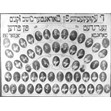- Address
- 44 St. George Street
- Source
- Landmarks
The Toronto Section of the National Council of Jewish Women initially operated out of 2 rented rooms and then later at a house on McCaul Street. In 1922, on its 25th anniversary, they became officially incorporated and purchased Community House at 44 St. George Street.
- Address
- 44 St. George Street
- Time Period
- 1922-[ca. 1964]
- Scope Note
- The Toronto Section of the National Council of Jewish Women initially operated out of 2 rented rooms and then later at a house on McCaul Street. In 1922, on its 25th anniversary, they became officially incorporated and purchased Community House at 44 St. George Street.
- History
- Many activities of the Toronto section of the National Council of Jewish Women operated from this building including Camp Camperdown for Girls, Jewish Girl Guides, a big sister program, classes in sewing, citizenship, and English. There was also a free legal bureau. Additionally, the building was used by a number of youth groups and clubs during a time when adequate meeting and recreation space was hard to find including the Jewish Girls Club. The Jewish Community Centre Association, formed in the fall of 1936, was located at this building. They operated a variety of classes including cooking, sewing, journalism, language, dance and art classes. They also operated a summer nursery school. Under the auspices of the Canadian Jewish Congress, the Community House also became a Service Mens Club, used as a place of refuge during the Second World War for members of the Canadian military on active service. The NCJW moved to a building on Bathurst, north of Sheppard in 1964.
- Category
- Private Clubs
- Organization
- Source
- Landmarks
- Address
- 24 Cecil Street
- Source
- Landmarks
The Labour Zionist Order was an outgrowth of the Labour Zionist party in Israel (the Mapai party). They carried out a number of different functions. They were pro-labour and pro-Zionist. They acted as a mutual benefit society—the Labour Zionist Alliance or Farband, formally known as the Jewish National Workers Alliance or Farband Labour Zionist Order. They also operated a school for children called the Farband Folks Shule (later Bialik Hebrew Day School). There was a fundraising organization that they oversaw called the Israel Histadrut of Toronto whose annual campaign raised money for the Israel Histadrut in Israel (the Federation of Labour in Israel), founded in 1920. The campaign money was used to fund economic, trade union, military, social, and cultural activities in Israel, as well as to provide a comprehensive system of health insurance and hospital services to workers. The Israel Histadrut campaign in Toronto had an autonomous executive board, however it's activities were overseen by the Labour Zionist Order.
- Address
- 24 Cecil Street
- Time Period
- 1922-
- Scope Note
- The Labour Zionist Order was an outgrowth of the Labour Zionist party in Israel (the Mapai party). They carried out a number of different functions. They were pro-labour and pro-Zionist. They acted as a mutual benefit society—the Labour Zionist Alliance or Farband, formally known as the Jewish National Workers Alliance or Farband Labour Zionist Order. They also operated a school for children called the Farband Folks Shule (later Bialik Hebrew Day School). There was a fundraising organization that they oversaw called the Israel Histadrut of Toronto whose annual campaign raised money for the Israel Histadrut in Israel (the Federation of Labour in Israel), founded in 1920. The campaign money was used to fund economic, trade union, military, social, and cultural activities in Israel, as well as to provide a comprehensive system of health insurance and hospital services to workers. The Israel Histadrut campaign in Toronto had an autonomous executive board, however it's activities were overseen by the Labour Zionist Order.
- History
- The Labour Zionist Order purchased the house at 24 Cecil Street in 1922 and established a library in it. It was called the Farband Institute.
- Category
- Political
- Organization
- Source
- Landmarks
- Address
- 179 Beverley Street
- Source
- Landmarks
The Federation of Jewish Philanthropies of Toronto (FJPT) was made a charitable organization under the laws of Ontario in March, 1917. Its central goal was to end the frequent, uncontrolled, and competitive fund soliciting by a wide range of individual Toronto Jewish philanthropic and social service institutions and instead substitute a single coordinated city-wide community fundraising effort. This would ensure adequate and accountable funding for all its affiliated organizations and agencies in Toronto. The first office of the FJPT was at 206 Beverley St., but by 1924 it was headquartered at 218 Simcoe St. and by 1928 it had moved to 179 Beverley St., which was renamed "Scheuer House" after the FJPT's first president, Edmund Scheuer.
- Address
- 179 Beverley Street
- Time Period
- 1928-1945
- Scope Note
- The Federation of Jewish Philanthropies of Toronto (FJPT) was made a charitable organization under the laws of Ontario in March, 1917. Its central goal was to end the frequent, uncontrolled, and competitive fund soliciting by a wide range of individual Toronto Jewish philanthropic and social service institutions and instead substitute a single coordinated city-wide community fundraising effort. This would ensure adequate and accountable funding for all its affiliated organizations and agencies in Toronto. The first office of the FJPT was at 206 Beverley St., but by 1924 it was headquartered at 218 Simcoe St. and by 1928 it had moved to 179 Beverley St., which was renamed "Scheuer House" after the FJPT's first president, Edmund Scheuer.
- History
- Original affiliated agencies of the FJPT were: the Ladies Co-operative Board, the Jewish Orphans' Home, the Jewish Girls Club, the Junior Council of Jewish Women, the Hebrew Ladies Maternity Aid and Sewing Circle, the Hebrew Young ladies Boot and Shoe Society, the Sewing Circle, the Jewish Branch of the Big Brotherhood Movement, the Hebrew Free Loan Society, the Jewish Dispensary, and the Hebrew Burial Society. In 1924, six new agencies were added to the FJPT. They were: Mount Sinai Hospital, the Jewish Boys' and Girls' Camp, Jewish Big Sisters, the Family Welfare Bureau, the Federation Health Clinic and the Federation Employment Bureau.
- Category
- Organization
- Social Service
- Source
- Landmarks
- Address
- 150 Beverley Street
- Source
- Landmarks
The Federation of Jewish Philanthropies of Toronto was made a charitable organization under the laws of Ontario in March, 1917. Its central goal was to end the frequent, uncontrolled, and competitive fund soliciting by a wide range of individual Toronto Jewish philanthropic and social service institutions and instead substitute a single coordinated city-wide community fundraising effort. This would ensure adequate and accountable funding for all its affiliated organizations and agencies in Toronto. The first office of the FJPT was at 206 Beverley St., but by 1924 it was headquartered at 218 Simcoe St. and by 1928 it had moved to 179 Beverley St., which was renamed "Scheuer House" after the FJPT's first president, Edmund Scheuer.
- Address
- 150 Beverley Street
- Time Period
- 1948-1983
- Scope Note
- The Federation of Jewish Philanthropies of Toronto was made a charitable organization under the laws of Ontario in March, 1917. Its central goal was to end the frequent, uncontrolled, and competitive fund soliciting by a wide range of individual Toronto Jewish philanthropic and social service institutions and instead substitute a single coordinated city-wide community fundraising effort. This would ensure adequate and accountable funding for all its affiliated organizations and agencies in Toronto. The first office of the FJPT was at 206 Beverley St., but by 1924 it was headquartered at 218 Simcoe St. and by 1928 it had moved to 179 Beverley St., which was renamed "Scheuer House" after the FJPT's first president, Edmund Scheuer.
- History
- They moved to Dundas Square in the late 1940s and then occupied a number of different buildings until they moved into their long term home at 150-152 Beverley Street in 1948 where they remained until July 1983. This building was called the J. Irving Olebaum. As the community moved north, the the J. Irving Oelbaum Centre building was eventually sold in 1983 and the United Jewish Welfare Fund moved to the Lipa Green building at Bathurst and Sheppard. The building on Beverley Street was mysteriously burned down.
- Category
- Social Service
- Organization
- Source
- Landmarks
- Address
- 29 Cecil Street
- Source
- Landmarks
As early as 1916 the Ezras Noshem Society (a mutual benefit society for Jewish women) started to raise funds to purchase and renovate what would become The Toronto Jewish Old Folks' Home (Baycrest Centre for Geriatric Care’s forerunner) after its members recognized the need for a home in Toronto where the Jewish elderly could receive kosher meals and communicate with staff in their own language. Property at 31 Cecil Street was purchased in 1917 and sometime between September 1918 and January 1920 the Home officially opened there. The Home was run by a small staff and the women of Ezras Noshem who volunteered their time to make beds, cook kosher meals, do laundry and sponsor fundraising events.
- Address
- 29 Cecil Street
- Time Period
- 1917-1954
- Scope Note
- As early as 1916 the Ezras Noshem Society (a mutual benefit society for Jewish women) started to raise funds to purchase and renovate what would become The Toronto Jewish Old Folks' Home (Baycrest Centre for Geriatric Care’s forerunner) after its members recognized the need for a home in Toronto where the Jewish elderly could receive kosher meals and communicate with staff in their own language. Property at 31 Cecil Street was purchased in 1917 and sometime between September 1918 and January 1920 the Home officially opened there. The Home was run by a small staff and the women of Ezras Noshem who volunteered their time to make beds, cook kosher meals, do laundry and sponsor fundraising events.
- History
- By 1938 the Home had expanded into its neighboring houses at 29, 33, and 35 Cecil Street and was caring for 115 residents. It provided residents with synagogue services, a hospital ward and social activities. At this time the Home also became a member of the United Jewish Welfare Fund. In 1946, the need for a larger and more modern building prompted a fundraising campaign and in 1954, the new building opened at 3650 Bathurst Street.
- Category
- Organization
- Medical
- Social Service
- Source
- Landmarks
- Address
- 340 College Street
- Source
- Landmarks
The Raxlen brothers were born in Toronto in Cabbagetown, where their father operated a grocery store. The four brothers included Saul, Benjamin, Alexander and Sam. All of the brothers graduated in medicine during the 1930s, except for Sam, who became a dentist. Together, they opened up the Raxlen Clinic in 1937, which was located on Carleton Street.
- Address
- 340 College Street
- Time Period
- 1953-1978
- Scope Note
- The Raxlen brothers were born in Toronto in Cabbagetown, where their father operated a grocery store. The four brothers included Saul, Benjamin, Alexander and Sam. All of the brothers graduated in medicine during the 1930s, except for Sam, who became a dentist. Together, they opened up the Raxlen Clinic in 1937, which was located on Carleton Street.
- History
- In 1953, the brothers opened their own private hospital, Doctors Hospital, which was located at 320-340 College Street at Brunswick Avenue. The brothers modernized and expanded the facility so that it could accommodate up to 168 beds by 1955. It soon became the largest privately-held non-profit hospital in North America. By the time the brothers sold it during the late 1970s, it had 554 full-time staff and 500 hospital beds.
- Category
- Organization
- Medical
- Source
- Landmarks
- Address
- 150 Beverley Street
- Source
- Landmarks
By 1919 the plight of post-war Eastern European Jewry and the need for a united community voice for Canadian Jewry led to the creation of the Canadian Jewish Congress. Its founding meeting was held on March 16, 1919 in Montreal. Though it briefly maintained a tiny regional office in Toronto, the CJC remained inactive until 1933, when it fully reconvened by opening offices in Winnipeg, Montreal, and Toronto. Egmont L. Frankel was the first President of the new Central Division in Toronto. While the National Office in Montreal focused on the overarching issues of the social and economic rights of European Jewry, assistance for Jewish immigrants, and combating prejudice in Canada, the Toronto office dealt with local violent anti-Jewish demonstrations as well as continuing discrimination both in employment and in access to public recreational facilities. The structure was based on regular national biennial plenary conferences at which policies were delineated and national and regional executives were elected. Between plenary sessions, National and Regional Councils were in charge.
- Address
- 150 Beverley Street
- Time Period
- 1919-2012
- Scope Note
- By 1919 the plight of post-war Eastern European Jewry and the need for a united community voice for Canadian Jewry led to the creation of the Canadian Jewish Congress. Its founding meeting was held on March 16, 1919 in Montreal. Though it briefly maintained a tiny regional office in Toronto, the CJC remained inactive until 1933, when it fully reconvened by opening offices in Winnipeg, Montreal, and Toronto. Egmont L. Frankel was the first President of the new Central Division in Toronto. While the National Office in Montreal focused on the overarching issues of the social and economic rights of European Jewry, assistance for Jewish immigrants, and combating prejudice in Canada, the Toronto office dealt with local violent anti-Jewish demonstrations as well as continuing discrimination both in employment and in access to public recreational facilities. The structure was based on regular national biennial plenary conferences at which policies were delineated and national and regional executives were elected. Between plenary sessions, National and Regional Councils were in charge.
- History
- During the 1930s the Central Division Office moved several times and occupied offices in the following locations; Yonge St., the Bond St. Synagogue, Scheuer House, the Zionist Building, and its long-term home at 150-152 Beverley Street where it remained until its July, 1983 move to the Lipa Green Building in North York. Its activities expanded to include taking responsibility for Jewish educational standards but, by 1941, its main efforts shifted to support for Canada’s war effort. Immediately after the end of the war, the focus again shifted to Jewish immigration projects and the maintenance of Jewish identity in small communities.By 1950, the CJC’s use of the title “division” was changed to “region” to accommodate internal operational “divisions” within each region. Also, by then, the Central Region was busy expanding its programs for all Ontario Jewish communities, creating a province-wide council of youth groups, and working with the newly-created Bureau of Jewish Education (later Board of Jewish Education).
- Category
- Organization
- Source
- Landmarks
![Ladies of National Council of Jewish Women in gym, 44 St. George St., Toronto, [192-?]. Ontario Jewish Archives, Blankenstein Family Heritage Centre, item 4140.|](/media/Digital Assets/4140.jpg?width=111&height=111&404=no-img.jpg)
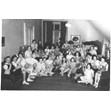
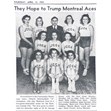
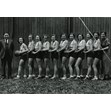
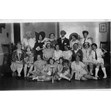

![Club One, Pioneer Women, Toronto, [ca. 1948-1952]. Ontario Jewish Archives, Blankenstein Family Heritage Centre, item 4749.|](/media/Digital Assets/4749.jpg?width=111&height=111&404=no-img.jpg)
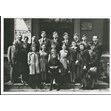

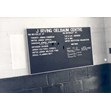

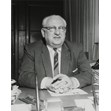

![Residents gardening in yard at the Jewish Old Folks' Home, Cecil Street, [ca. 1950]. Ontario Jewish Archives, Blankenstein Family Heritage Centre, fonds 61, series 6, item 3.|](/media/Digital Assets/61-JCC/F61_s6_i003.jpg?width=111&height=111&404=no-img.jpg)
![Men's ward of Jewish Old Folks' Home, Cecil Street, [ca. 1950]. Ontario Jewish Archives, Blankenstein Family Heritage Centre, fonds 61, series 6, item 2.|](/media/Digital Assets/61-JCC/F61_s6_i002.jpg?width=111&height=111&404=no-img.jpg)
![Nurses' station at Jewish Old Folks' Home, Cecil Street, [ca. 1950]. Ontario Jewish Archives, Blankenstein Family Heritage Centre, fonds 61, series 6, item 5.|](/media/Digital Assets/61-JCC/F61_s6_i005.jpg?width=111&height=111&404=no-img.jpg)
![Poster for Jewish Old Folks Home, Cecil Street, Toronto, [195-]. Ontario Jewish Archives, Blankenstein Family Heritage Centre, item 249.|](/media/Digital Assets/249.jpg?width=111&height=111&404=no-img.jpg)
![Exterior view of Jewish Old Folks' Home, Cecil Street, [ca. 1950]. Ontario Jewish Archives, Blankenstein Family Heritage Centre, fonds 61, series 6, item 1.|](/media/Digital Assets/61-JCC/F61_s6_i001.jpg?width=111&height=111&404=no-img.jpg)
![Jewish Old Folks' Home (Toronto), [192-?]. Ontario Jewish Archives, Blankenstein Family Heritage Centre, fonds 14, series 6, item 5.|This photo depicts the exterior of 29 and 31 Cecil Street. Staff and residents are pictured from a distance standing in front of the home. The signs on the building were added to the image after the photograph was taken. The photograph has been plaque mounted.](/media/Digital Assets/14-Baycrest/Series 6/F14_s6_i5.jpg?width=111&height=111&404=no-img.jpg)
![Hospital at the Jewish Old Folks' Home, Cecil Street (Toronto), [ca. 1933]. Ontario Jewish Archives, Blankenstein Family Heritage Centre, fonds 14, series 6, item 7.|Item is a copy photograph of residents and a nurse inside the hospital ward at the Jewish Old Folks' Home. This image is found on page 22 of the Home's annual calendar for 1933-4.](/media/Digital Assets/14-Baycrest/Series 6/F14_s6_i7.jpg?width=111&height=111&404=no-img.jpg)
![Jewish Old Folks' Home (Toronto) poster, [193-?]. Ontario Jewish Archives, Blankenstein Family Heritage Centre, fonds 14, series 6, item 8.|This is a publicity poster depicting the exterior of 29 and 31 Cecil Street and group photographs of residents. The signs on the Home were added to the photograph after the image was taken.](/media/Digital Assets/14-Baycrest/Series 6/F14_s6_i8.jpg?width=111&height=111&404=no-img.jpg)
![Residents in backyard of Jewish Old Folks' Home, Cecil Street, [ca. 1950]. Ontario Jewish Archives, Blankenstein Family Heritage Centre, fonds 61, series 6, item 6.|](/media/Digital Assets/61-JCC/F61_s6_i006.jpg?width=111&height=111&404=no-img.jpg)
![Residents in corridor of Jewish Old Folks' Home, Cecil Street, [ca. 1950]. Ontario Jewish Archives, Blankenstein Family Heritage Centre, fonds 61, series 6, item 12.|](/media/Digital Assets/61-JCC/F61_s6_i012.jpg?width=111&height=111&404=no-img.jpg)
